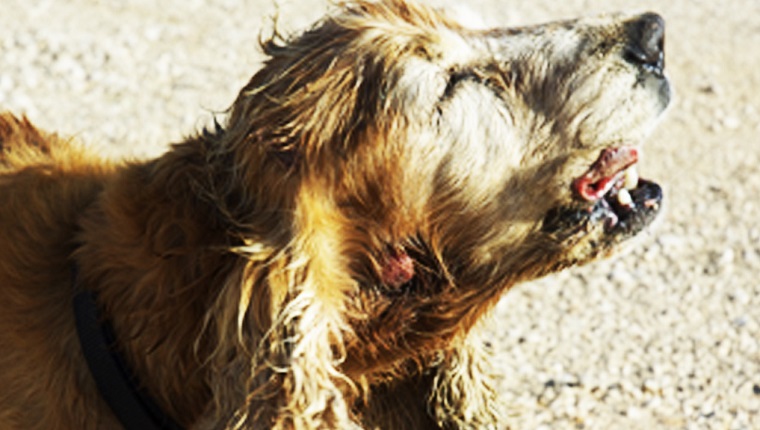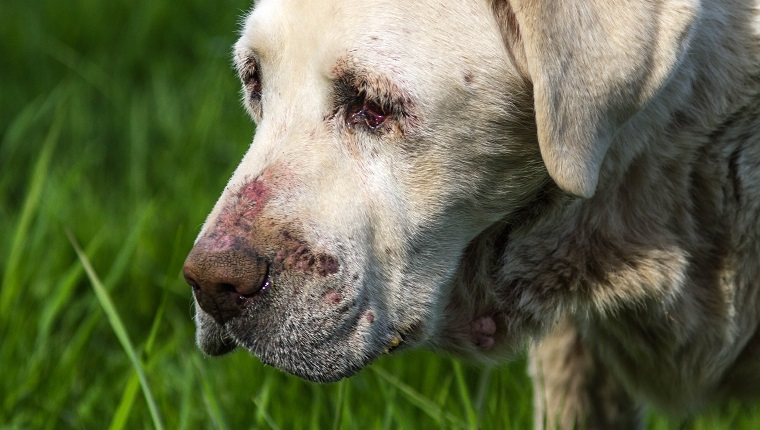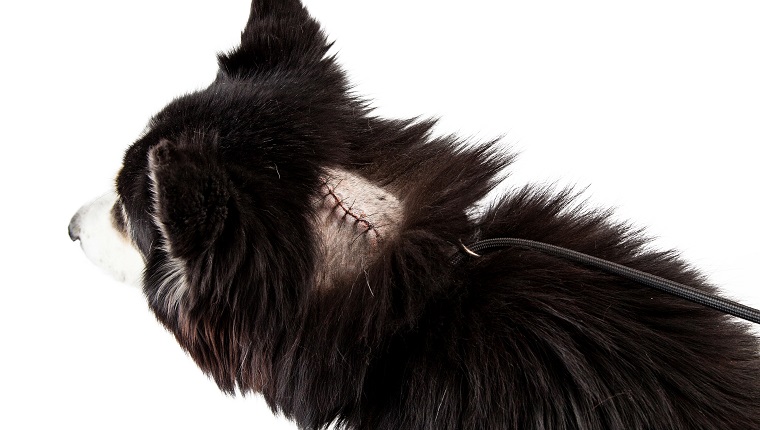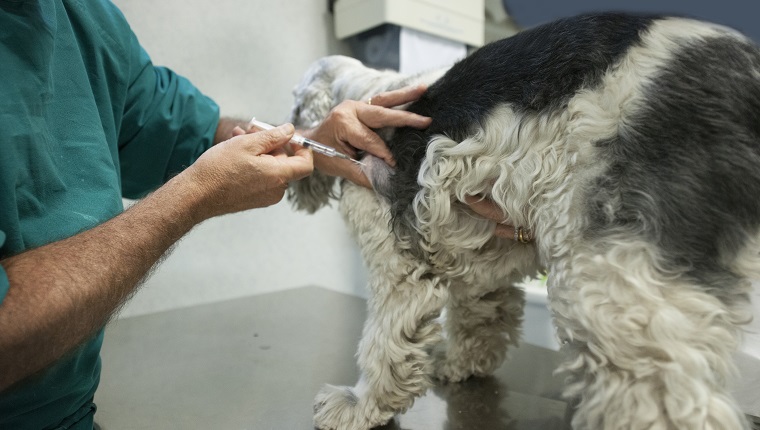Basal cell carcinomas and tumors are the most common forms of skin cancer found in dogs. Most basal cell tumors in dogs are benign, though they can become malignant. Malignant tumors are referred to as “carcinomas.”
When caught early, most basal cell carcinomas can be treated without further complications, usually with surgery. It’s rare for the cancer to metastasize, or spread to other parts of the body.
Basal cell tumors appear on the outer layer of skin as hairless masses, usually around the head, neck, or shoulders. If you notice a raised mound on your dog’s skin, it’s important to get it checked out by a veterinarian. They’ll be able to tell you if it is benign or malignant and form a course of treatment.
Early detection and treatment are always more effective.
Here’s what you should know about the symptoms, causes, and treatments of basal cell carcinomas in dogs.
Symptoms Of Basal Cell Carcinoma In Dogs

Basal cell tumors or carcinomas often appear as circular, raised, hairless masses that can vary from 0.2 to 10 centimeters in diameter. Usually these are found around the head, neck, or shoulders.
Sometimes they can appear discolored when compared to healthy skin. When they go without treatment, basal cell carcinomas can ulcerate and cause other skin problems.
Benign basal cell tumors tend to be more raised and stalk-like, while basal cell carcinomas tend to be flatter. Your vet will be able to tell you if your dog’s tumor is benign or malignant and form a treatment plan.
You should always get any mass you find on your dog checked out by a vet to be safe.
Causes Of Basal Cell Carcinoma In Dogs

The causes of basal cell tumors or carcinomas in dogs are unknown.
Although basal cell tumors in humans have been linked to sun exposure, the same link hasn’t been found in dogs. Therefore, there’s no known method of preventing basal cell carcinomas in dogs.
Though the causes are unknown, there are several breeds that are more prone to developing basal cell tumors and carcinomas. Basal cell tumors are more common in Wirehaired Pointing Griffons and Scottish Terriers, while basal cell carcinomas are seen more in Cocker Spaniels and Poodles.
Middle-aged and older dogs are also more likely to develop these conditions.
Treatments For Basal Cell Carcinoma In Dogs

Basal Cell Carcinomas in dogs are sometimes treated with cryosurgery where they are frozen off with liquid nitrogen, though this is only the case for very small tumors that are less than a centimeter wide.
More often, a vet will remove the tumor with surgery. If the vet removes all of the affected skin, the dog can usually recover without complications, and the tumor generally will not return so long as a sufficient amount of skin is removed.
Basal cell carcinomas almost never go away on their own without treatment, so you must treat them properly as early as possible.
Has your dog ever suffered from a basal cell tumor or carcinoma? How did you treat it? Let us know in the comments below!









